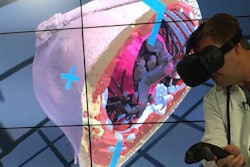Their study explored the utility of iterative reconstruction on their own newly developed 3D CAD system for pulmonary nodules. They acquired the images at standard-, reduced-, and ultralow-dose CT and compared their algorithm's performance with filtered back projection.
"On a 3D CAD system for lung nodule detection, the iterative reconstruction technique is one of the key factors for radiation dose reduction on lung CT screening without degradation of detection performance," presenter Dr. Yoshiharu Ohno, PhD, wrote in an email to AuntMinnie.com. Ohno is the director of functional and diagnostic imaging research and a professor of radiology at Kobe University Graduate School of Medicine.
The study included 40 patients undergoing chest CT with the standard-dose (250 mA), reduced-dose (50 mA), or ultralow-dose (10 mA) protocols. Data were reconstructed into 1-mm-thick images both with and without iterative reconstruction (adaptive iterative dose reduction [AIDR] 3D, Toshiba Medical Systems). Next, nodule detection was performed by the group's 3D nodule detection scheme, and the researchers compared the detection rate, sensitivity, and false-positive rate per case among all protocols.
Nodule detection sensitivity for reduced-dose (72.3%) and ultralow-dose CT (66.3%) with AIDR 3D were significantly higher than sensitivity without AIDR 3D, which was 56.4% and 35.6%, respectively (p < 0.001).
"When applying AIDR 3D and this newly developed CAD system, over 95% of the radiation dose can be reduced from the standard-dose CT protocol while keeping detection performance in routine clinical practice," Ohno said.



















